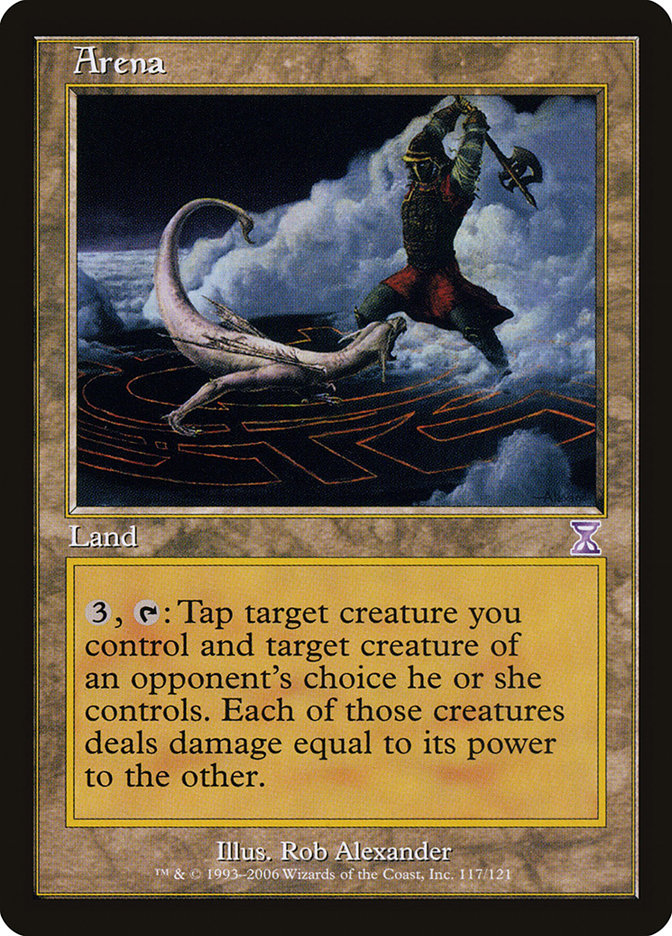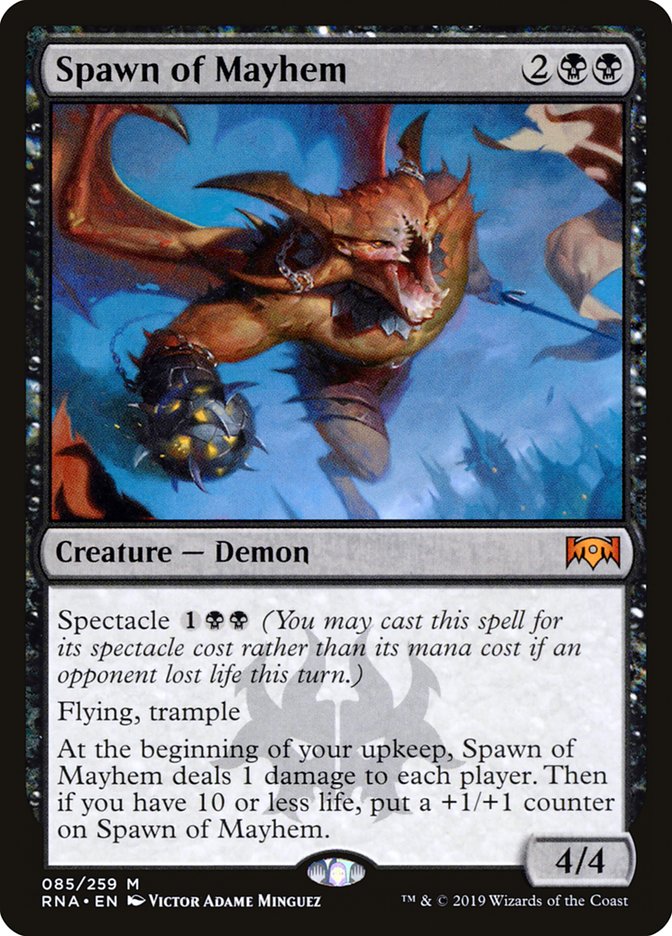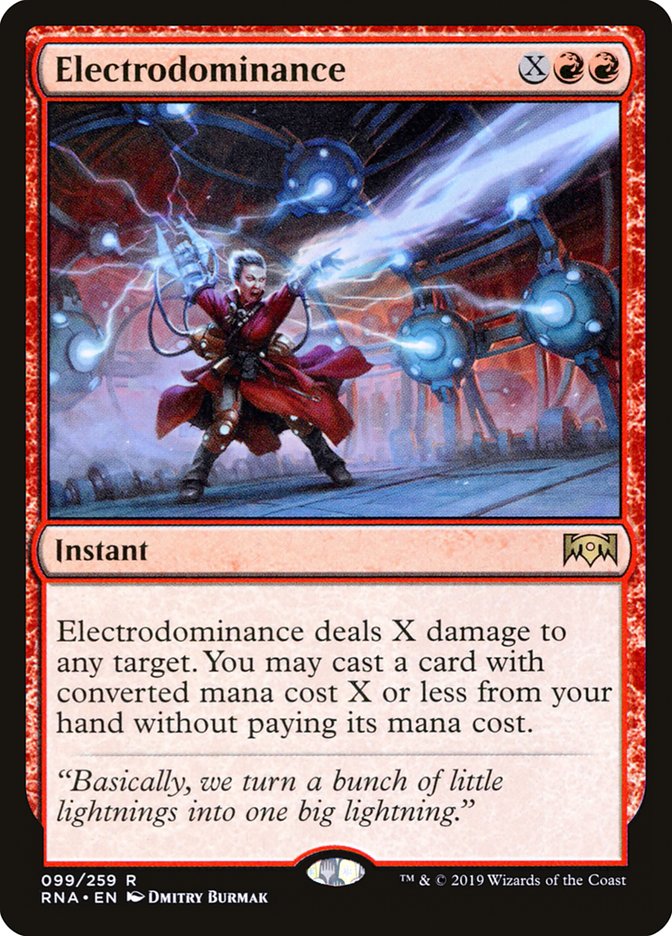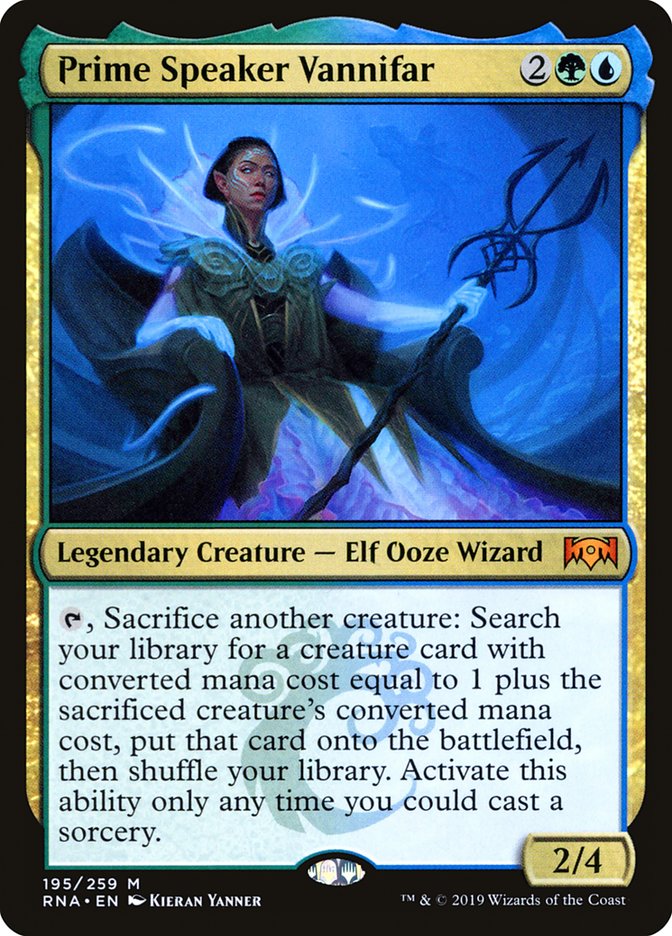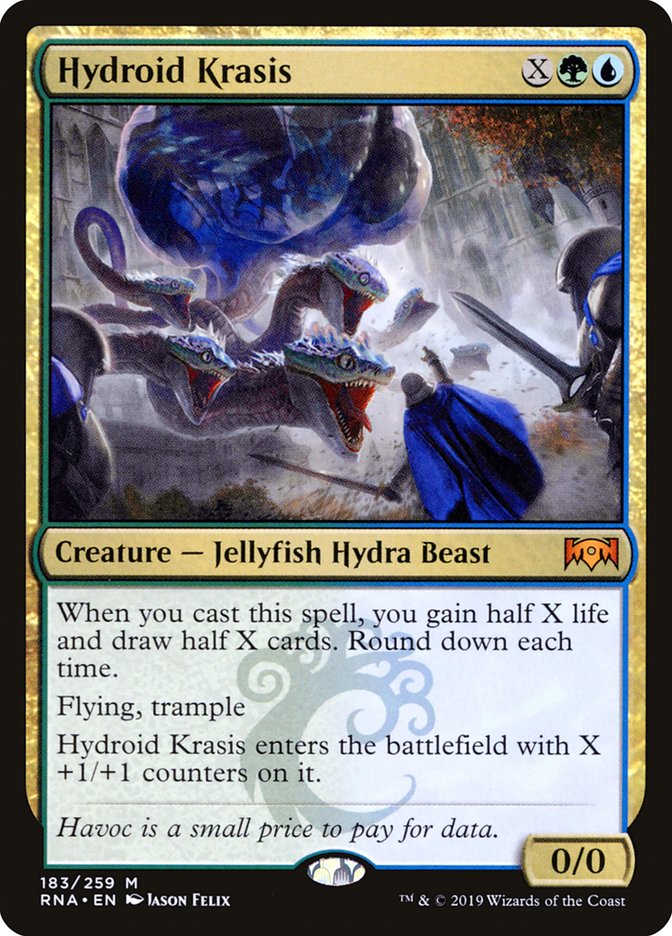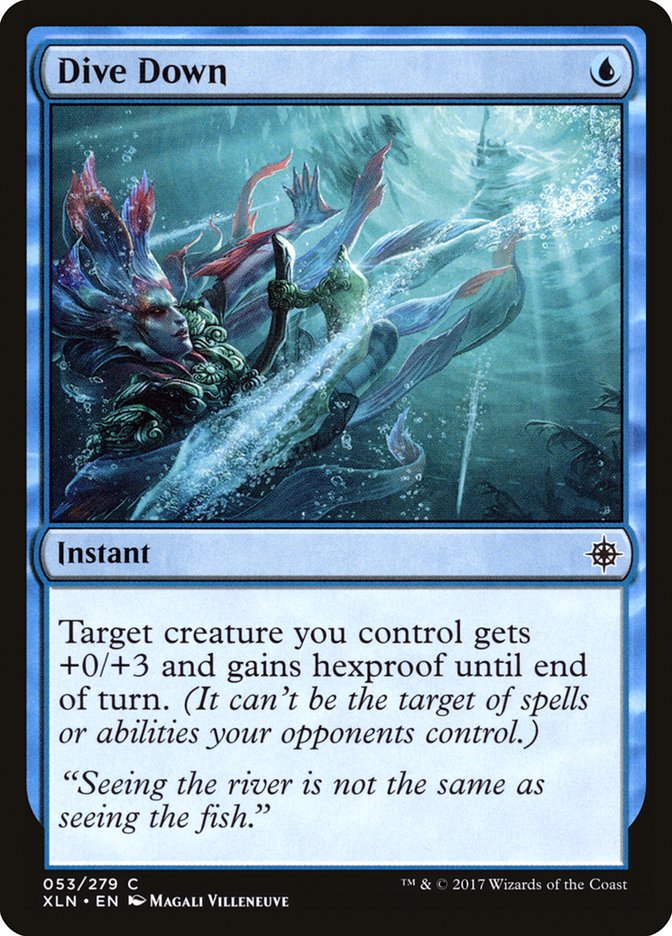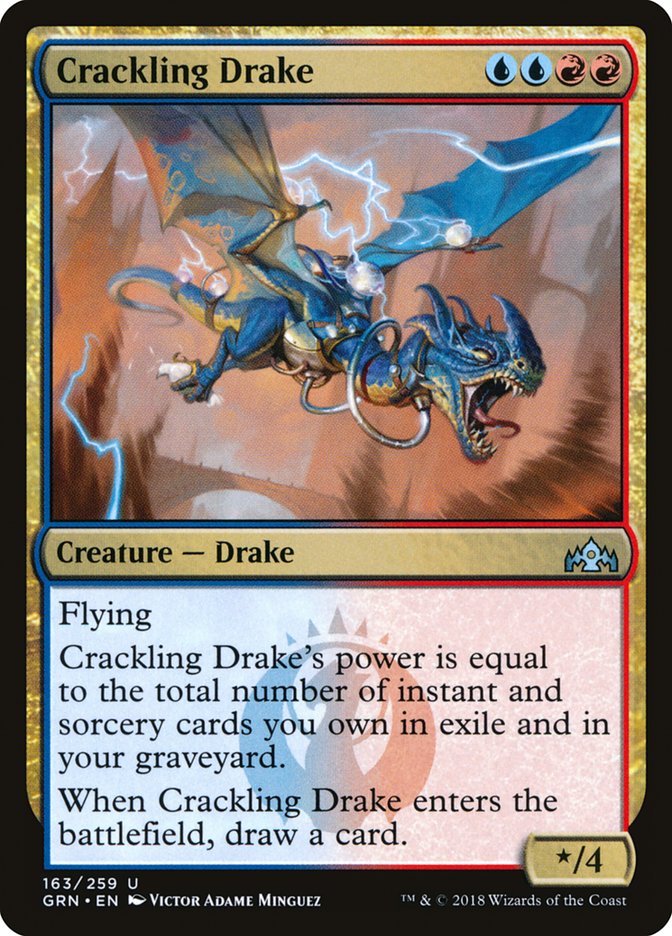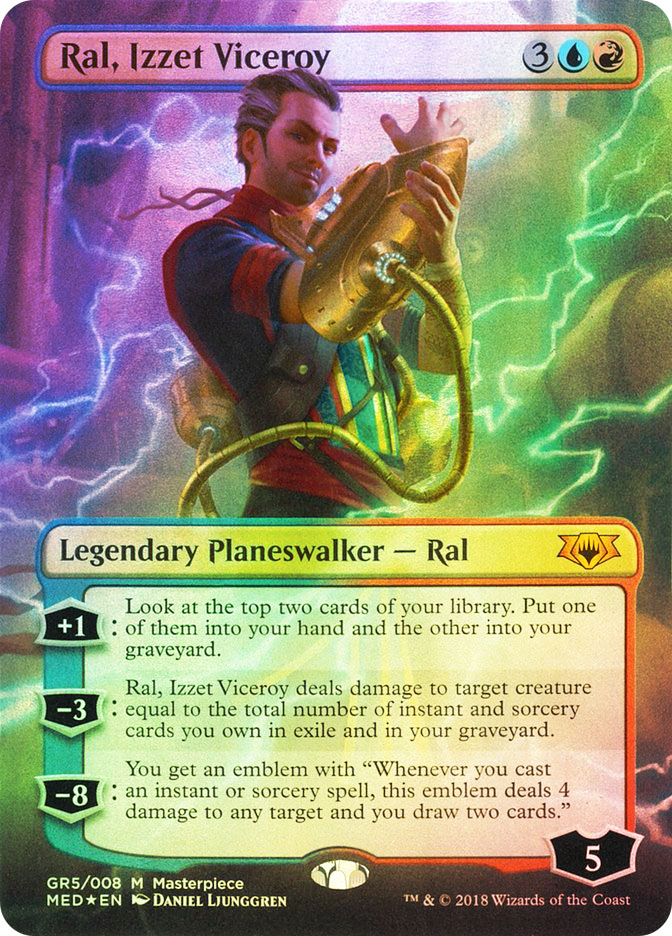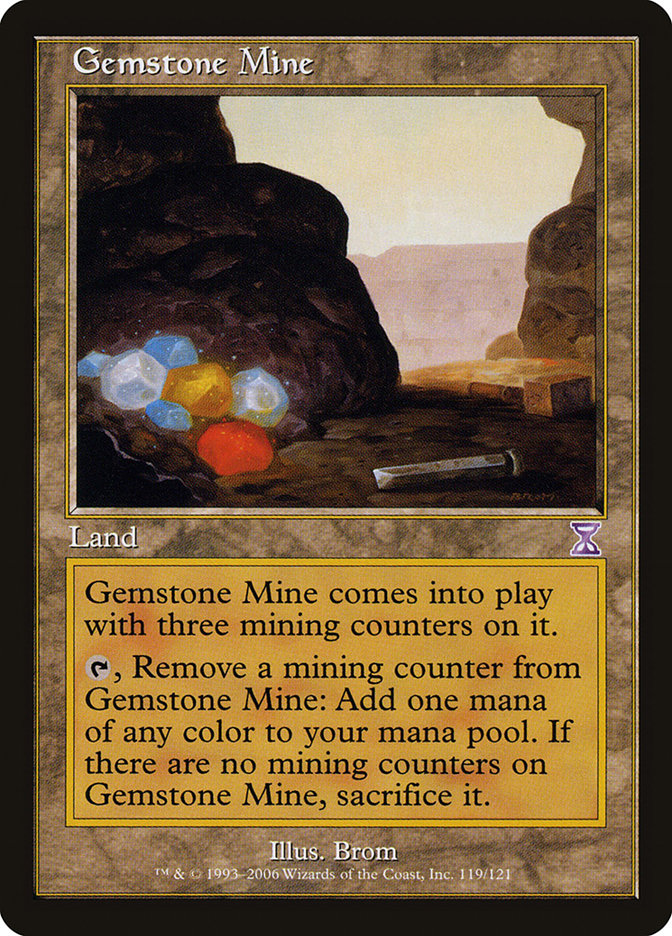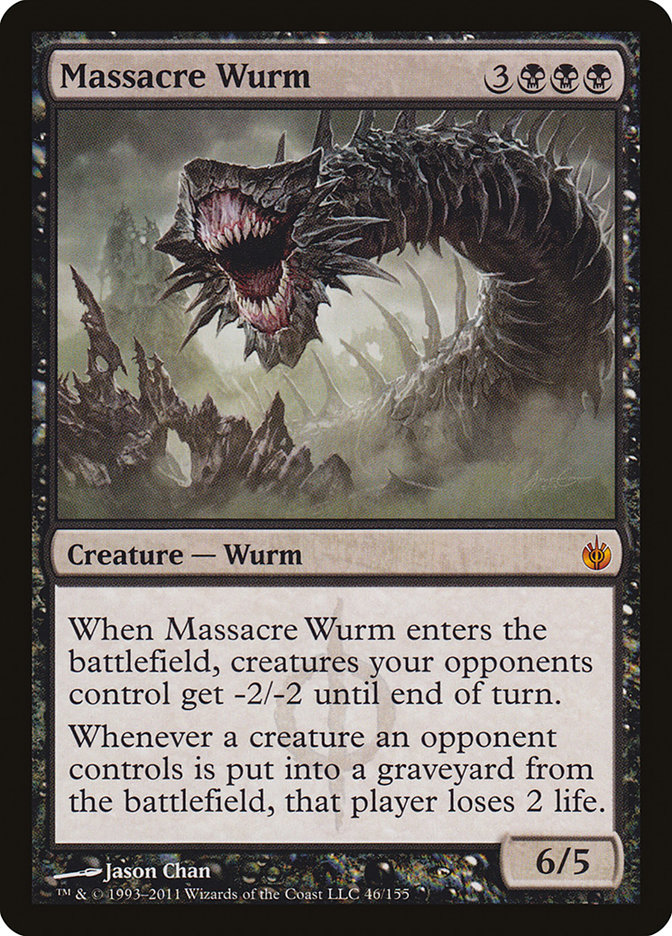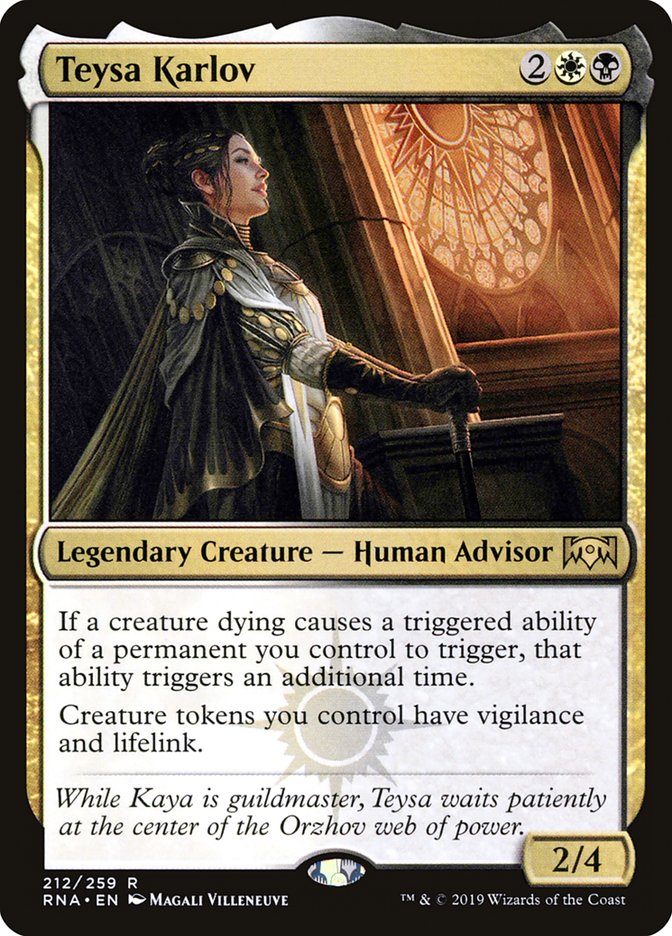Ravnica Allegiance
has finally made its Standard debut, and the new metagame looks quite
promising. Those of us who were in Indianapolis last weekend or who watched
the event on coverage saw a bevy of exciting new decks duking it out for
dominance in what looks like another fun and diverse format.
It wasn’t all that long ago that I referred to the week one metagame as
“overreaction week.” Without any established metagame to speak of, the week
one meta would simply be a mishmash of established strategies, aimless
control decks, and yet another mono-red aggro instance. Cards like Boros
Reckoner would show up, dominate for a week, and then disappear forever.
Things are different now, in large part due to Arena and MTGO gaining
access to each new set almost a week and a half before the first major
paper tournament. This gives the deckbuilders of the SCG Tour a sense of
what the baseline metagame is likely to be, as well as a venue for them to
do a lot of early testing.
The result is a week one metagame that is more tuned and predictive than it
used to be. While decks are still going to rise and fall over the coming
weeks, the results that we got from #SCGINDY over the weekend are fairly
meaningful in terms of figuring out which Ravnica Allegiance cards
are going to end up being Standard superstars.
If you plan to play any amount of Standard this season, this article is for
you. Ravnica Allegiance has shaken up the Standard metagame, and
the impact to your collection value is going to be big.
Here are some of the key financial trends that I noticed this weekend:
Arena’s Best-of-One Standard Constructed Ladder Played Us All
If you played a lot of Arena over the past week-or if you simply listened
to the conversation about the evolving Standard metagame on social
media-you probably came into the weekend believing that Mono-Red Aggro and
Bant Nexus were the decks to beat. In fact, there were people claiming that
Mono-Red Aggro was as good or better than it was during the Ramunap Red
days and/or that Wilderness Reclamation deserved to be pre-emptively banned
in Standard.
The Top 8 of #SCGINDY? Zero Mono-Red Aggro decks. Zero Wilderness
Reclamation decks.
So yeah. Mono-Red Aggro and Bant Nexus both made Day 2 at a decent clip,
and I expect them to both be formidable players going forward, but neither
deck looks like it’s about to warp the format around it.
One of the biggest reasons behind this particular disconnect is that both
Mono-Red Aggro and the Nexus of Fate decks are far better on game 1 than
they are on games 2 and 3. This makes them uniquely well-suited for Arena’s
best-of-one format. And since this is the first major format shift since
Arena really took off, large portions of the community wrongly assumed that
those Arena results would hold up in a paper tournament where all of the
matches were best-of-three.
This disconnect between Arena and paper is a good thing to keep in mind for
the future. New sets come out every couple of months, and we have to be
careful not to read too much into the Arena best-of-one results next time
out. While the success of Arena has helped establish a better week one
baseline for Standard, there are still some major differences between
best-of-one on Arena and best-of-three on paper.
Financially, though, I’m wondering if the pendulum has swung too far the
other way thanks to all the talk about these decks missing this single Top
8. Both Mono-Red Aggro and Bant Nexus are likely to become pillars of the
metagame anyway, though perhaps not to the degree that many thought. Both
decks are still good, though, and this is the very definition of a small
sample size.
I feel like the narrative over the next couple of days will be to fade
these cards, which means that you’ll have a decent chance to buy in on the
cheap if you want. This is especially true for Mono-Red Aggro, which had
four finishes inside the top twenty and easily could have made Top 8. I’d
start by taking a look at this deck by Caleb Scherer:
There aren’t a ton of financially-relevant cards here-this build runs
neither Legion Warboss nor Runaway Steam-Kin-but Goblin Chainwhirler is
still a key Standard card, and Risk Factor could be due for another jump at
some point. You’ll be going against the current narrative about these cards
if you buy in now, which should lead to favorable prices.
Unlike Week One of Guilds of Ravnica Standard, Several Promised
New Archetypes Were No-Shows at #SCGINDY.
Before we get too deep into the decks that dominated the StarCityGames Open
in Indianapolis, let’s spend a few moments talking about the cards that
didn’t show up on week one. And I’m not talking about quality decks like
Mono-Red Aggro and Bant Nexus that did well despite not making it into the
Top 8-I’m talking about the decks that didn’t show up, period.
Most people are far too hesitant to move on from cards that fail to meet
early expectations, and if we’re going to assume that week one’s
best-performing cards are going to skyrocket in price, we also have to
assume that week one’s biggest no-shows are going to drop like a rock. This
is an important concept to internalize-making money on good specs is nice
and all, but preventing yourself from taking big losses due to pride or
stubbornness is equally key.
Spawn of Mayhem is an example of a card that I’m trying to move on from
ASAP. I was high on Spawn of Mayhem during my set review, and I still think
that it would be terrific in the right metagame. Unfortunately, this
particular metagame does not appear to be Spawn-friendly. While a pair of
Rakdos Aggro decks did make day two at #SCGINDY, that figure doesn’t even
begin to compare to the nine Mono-Red Aggro decks that were still in
contention after day one. Plus,neither of those decks even ran
Spawn of Mayhem-one was Mono-Red Aggro that splashed for Theater of Horrors
out of the sideboard, while the other only ran a handful of black cards
like Sovereign’s Bite and Sword-Point Diplomacy. This tells me that Spawn
of Mayhem does not seem like it’s going to be a major player in Standard
anytime soon. And since aggressive creatures are rarely popular in
Commander, I don’t really see who is going to keep this card’s price
propped up as more and more packs of Ravnica Allegiance are
opened.
Spawn of Mayhem currently retails for a whopping $15. Maybe you can get $15
in trade for it down at your LGS right now, but probably not. Chances are,
you’ll be trading or selling your copies at a steep discount. This is still
fine. Maybe Spawn of Mayhem comes out and breaks the metagame wide open
next week, but probably not. And in the meantime, this card is on its way
to $5 or lower. Take advantage of early perception and get out now.
The same is true for nearly all the other Rakdos and Gruul cards right now.
While the Streamer Preview and early hype seemed to indicate that this
format might be friendly to cards like Domri, Chaos Bringer; Judith, the
Scourge Diva; Bedevil; and Gruul Spellbreaker, I’d rather get out now and
try to jump back in later on if things start to shift in that direction.
Two other cards I’m keeping a close eye on: Electrodominance and Prime
Speaker Vannifar. While neither card seems to be making too much of an
impact in Standard yet, both cards still have a shot at paying off in
Modern. We’ll know more at some point over the next couple of weeks, but
I’m starting to get really worried about both of these cards as well.
Hydroid Krasis: The Best Card in Standard?
Move over Teferi. Take a seat, Arclight Phoenix. There’s a new Jellyfish in
town.
Half of the decks that made Day Two at #SCGINDY were running Hydroid
Krasis
, including several new and exciting archetypes. Sultai Midrange, Sultai
Climb, and Bant Nexus were the three major Krasis decks, but the Jellyfish
also made an appearance in Bant Climb, Bant Midrange, Temur Climb, and
several other successful brews. Not only is this card for real, it’s
popping up in basically every deck that can even halfway consider running
it.
At this point, it looks like Hydroid Krasis checks nearly all the boxes for
a preternaturally expensive card. Mythic rare? Check. Enables multiple
archetypes? Check. Fits into decks that aren’t just good, but fun and
popular? Check and check again. Right now, the only thing keeping Hydroid
Krasis out of $50+ range is that I haven’t seen too many people talking
about running it in Modern. If that changes, the sky is the limit.
That said, allow me to pump the brakes just a little on the Hydroid Krasis
bandwagon.
As I watched the coverage of #SCGINDY, there were more than a few moments
when Hydroid Krasis felt somewhat awkward. Tapping out in the midgame for
your Jellyfish only to get wrecked by a Vivien Reid or a Teferi or
something else big and powerful just seemed like a bad way to attack the
format’s other midrange and control decks. Now, it’s very possible, even
likely, that this doesn’t matter because of Hydroid Krasis’ overall
versatility. But there’s a part of me that wonders if we’re not being
blinded by the small sample size of the week one results.
At the moment, though, the hype for Hydroid Krasis is stratospheric. And if
it keeps seeing this much play, it’s well on its way to being the most
expensive card in Standard. While it won’t pass Teferi for a while–Teferi
is $60, Hydroid Krasis is $30, and we aren’t opening moreDominaria packs–I’m starting to get the feeling that Ravnica Allegiance might end up being known as “The Hydroid Krasis
set.”
If you’re a believer in Hydroid Krasis, then $30 is a bargain. $40-$50
retail is more in line with the current level of play that it’s seeing. If
Hydroid Krasis isn’t being overrated, you’re going to wish that you’d
bought in back when it was “just” $30. I wouldn’t blame anyone for going in
right now-I’m just not quite there myself.
Sultai Midrange is the new Golgari Midrange
It’s hard to crown a definitive “best deck” from Guilds of Ravnica
Standard because the format was so diverse and ever-changing, but Golgari
Midrange certainly spent its fair share of time at the top of that heap. At
a glance, it might look like Golgari Midrange has finally been slain…
Until you look at one of these Sultai Midrange decklists, of course:
Creatures (26)
- 4 Llanowar Elves
- 2 Carnage Tyrant
- 4 Wildgrowth Walker
- 4 Merfolk Branchwalker
- 1 Seekers' Squire
- 4 Jadelight Ranger
- 2 Ravenous Chupacabra
- 2 Midnight Reaper
- 3 Hydroid Krasis
Planeswalkers (3)
Lands (24)
Spells (7)

Yeah, it’s pretty much the same deck. Vivien Reid, Jadelight Ranger,
Carnage Tyrant, Llanowar Elves, Vraska’s Contempt, Wildgrowth Walker…it’s
all there. Hydroid Krasis is the only major maindeck addition, which is
probably why the card has been selling so well. Everybody who bought into
Golgari Midrange can simply go out and buy 3-4 copies of Hydroid Krasis,
some Watery Graves, some Breeding Pools, and voila-they still have a top
tier deck.
This is another reason to be slightly skeptical of Hydroid Krasis’ meteoric
rise. It’ll take a little longer for folks to fully invest in some of the
brand new decks. Modifying your existing tier list by adding a single
mythic is a far easier decision to make, and it appears as though a lot of
Standard players did just that.
Izzet Drakes is Still a Good Deck…but it No Longer Runs Arclight Phoenix
I know, I know, I thought it was dead, too.
Izzet Drakes had kind of fallen off the map on Arena and MTGO, leading most
people to believe that its time had come and gone. Key cards from Izzet
Drakes like Arclight Phoenix and Niv-Mizzet had begun to drop in price.
Even Steam Vents began losing (don’t say steam, don’t say steam) steam as
more people move toward more Simic manabases in order to support their
Hydroid Krasises.
But Izzet Drakes had a solid weekend at #SCGINDY, including Brad
Carpenter’s Top 8 finish. Dan Jessup had a respectable run with the deck as
well. It may not be the powerhouse it was this fall, but it’s far from
finished.
Financially, however, the fact that Izzet Drakes no longer runs Arclight
Phoenix is hugely relevant. Replacing the Phoenix with Pteramander was
crucial for keeping the deck alive in the metagame, but it also means that
Arclight Phoenix currently does not have a top tier home in Standard. And
this is a big deal-Arclight Phoenix is one of the most expensive cards in
the format, and Modern play alone won’t keep it at $28 retail. Expect this
price to start dropping fast unless Arclight Phoenix pops up again
somewhere else soon.
Esper Control’s Success at #SCGINDY Might be the Biggest Story of the
Tournament
Heading into #SCGINDY, it wasn’t entirely clear whether Esper would beat
out Jeskai or even Grixis as Standard’s new top control brew. Beyond that,
control decks are often slow to establish themselves in a new format, and
it wasn’t like Esper Control was lighting the world on fire on MTGO or
Arena. After following the buzz heading into the weekend, I was fully
expecting to see a bunch of Sultai Midrange decks featuring Hydroid Krasis.
I wasn’t expecting to see a consensus control deck, much less one that
performed incredibly well.
And yet, here we are. Take a look at Andrew Davis’ Esper Control brew:
Creatures (1)
Planeswalkers (4)
Lands (26)
Spells (29)

This is pretty similar to
Nick Cowden’s Esper Control list
, which also made Top 8. Teferi, Hero of Dominaria is still the centerpiece
of this list, and nothing I saw this weekend makes me believe that the
powerful planeswalker is going to drop in price: Teferi is $60, and if you
want to play Teferis, you’re going to have to shell out for them.
Ditto for Kaya’s Wrath. That card started out at $7, it’s up to $8, and I
don’t see that changing anytime soon. Four-mana wraths are great, and this
weekend proved that WWBB is a totally reasonable casting cost with the
amount of mana fixing that we currently have.
If you’re looking for potential spec targets, I recommend taking a look at
both Precognitive Perception and Absorb. Both brews of Esper Control run
these cards, with the full four copies of Absorb looking great all weekend.
These top tier rare counterspells often end up in the $5-$7 range, and
Absorb is still just $3. That’s going to change if Esper Control sticks
around, as I fully expect it will.
On the flip side, expect some major losses for Jeskai Control’s key pieces.
Cards like Deafening Clarion and Settle the Wreckage are about to see far
less play, and I wouldn’t want to be holding onto any of these as the
format establishes itself over the next couple of weeks.
White-Based Aggro and Midrange Decks Are Still Very Good
Wyatt Darby’s Esper Midrange Deck and Max Magnuson’s Azorius Aggro deck
might look and play entirely different, but they’re both white-based decks
that are interested in attacking with lots of creatures. Take a look:
Creatures (29)
- 4 Snubhorn Sentry
- 4 Benalish Marshal
- 4 Dauntless Bodyguard
- 1 Healer's Hawk
- 4 Venerated Loxodon
- 4 Hunted Witness
- 4 Tithe Taker
- 4 Deputy of Detention
Lands (21)
Spells (10)
Sideboard

Creatures (22)
- 2 Hostage Taker
- 2 Lyra Dawnbringer
- 3 Thief of Sanity
- 4 Deputy of Detention
- 3 Seraph of the Scales
- 4 Basilica Bell-Haunt
- 4 Hero of Precinct One
Planeswalkers (2)
Lands (24)
Spells (12)

For starters, Deputy of Detention is a four-of in both of these decks. It’s
pretty clear to me at this point that the unassuming Vedalken Wizard is
low-key one of the best cards in Ravnica Allegiance, and very few
people are talking about its performance so far. It’s not particularly
flashy, but it absolutely gets the job done, especially against the
midrange Bant and Sultai decks that are so popular right now. $4 is too low
for a two-drop that can fit in multiple top-tier lists.
Wyatt Darby’s Esper Midrange list is entirely different than the Esper
Control deck we talked about earlier. Financially, the most interesting
cards are the mythic rares: Dovin, Grand Arbiter; Lyra Dawnbringer; Karn,
Scion of Urza; and Seraph of the Scales. The fact that none of these cards
are four-ofs makes me a bit wary about speculating on any of ’em, but this
Esper Midrange deck showed up enough on Day Two to make me feel like it’s
going to be a legit option going forward. While I don’t see a ton of upside
here, I also doubt that any of these cards are going to tank-not as long as
this deck keeps performing well, at least.
Taking a closer look at Max’s deck reveals an update to a strategy that
we’ve seen kicking around the format for months. History of Benalia decks
shouldn’t be a secret at this point, of course, but these decks were
generally either Mono-White or Boros the last time we saw them. It’ll be
interesting to see if Azorius ends up being the new normal or not, but
either way I wouldn’t worry about panic-selling your white-based token
cards anytime soon.
Some Sort of Bant Midrange/Hadana’s Climb Deck is Probably Going to be
Great
Let’s take a look at the Bant Midrange deck that Jonathan Hobbs piloted
into the Top 8:
Creatures (13)
Planeswalkers (2)
Lands (26)
Spells (19)

We’ve seen some of these cards in other decks already-History of Benalia in
Azorius Aggro, Teferi, Hero of Dominaria and friends in Esper Control-but
this deck also runs Simic cards like Frilled Mystic and Growth-Chamber
Guardian as well as cards that I haven’t seen anywhere else, like four
copies of Angel of Grace, which looked pretty great whenever it hit the
battlefield last weekend. This wasn’t the only brew of Bant Midrange that
looked good in Indianapolis, though-
Matt Tumavitch’s 27th-place build
ran Hydroid Krasis, Biogenic Ooze, and Incubation Druid alongside Ajani,
Adversary of Tyrants while
this Garrison Fogt deck
went with four maindeck copies of Knight of Autumn, Lyra Dawnbringer, and
three copies of Shalai.
And then there were all the Hadana’s Climb decks that made it into Day Two.
Some were Sultai, some were Bant, and some were Temur, but they all seemed
to share some DNA with these Bant Midrange lists. This crop of decks are
base-green midrange brews that rely a lot more on green and blue cards than
the Sultai Midrange decks, which are heavily black-based and really only
dip into blue for Hydroid Krasis.
Financially, the only thing I can really say is that some version of this
deck (or perhaps it’ll end up branching off into a couple of different
variants) will end up being very good. Perhaps Jonathan Hobbs has it all
figured out-as of this writing, he has just made it into the finals of
#SCGINDY-in which case, Angel of Grace is absolutely worth buying right
now. It’s also worth noting that Hobbs was one of the only Simic/X pilots
who didn’t run Hydroid Krasis, which could limit that card’s upside
somewhat if his model ends up being the way forward.
In all likelihood, though, this deck is going to end up being modified and
iterated on based on where the metagame evolves from here. Green-based
midrange is clearly the place to be right now, and I suspect that it can
support a G/B/u build (Sultai Midrange) as well at least one versatile
G/U/x build (either Bant Midrange or something else). Cards like
Growth-Chamber Guardian, Biogenic Ooze, Incubation Druid, Hadana’s Climb,
and even Biomancer’s Familiar are worth keeping a close eye on going
forward.
Overall Thoughts on the New Standard Metagame
It already looks like Ravnica Allegiance is going to make a huge
impact on the Standard format. I mean, take a look at all the new rares and
mythics that made it into the Top 8 at #SCGINDY:
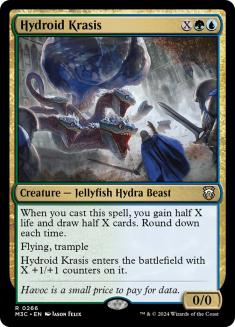
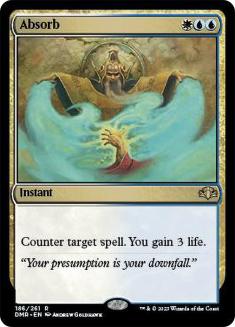
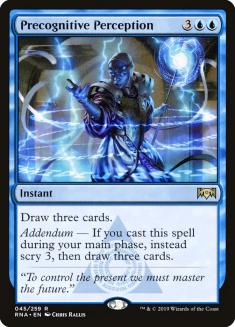
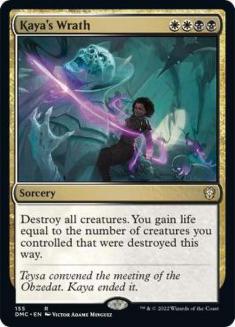
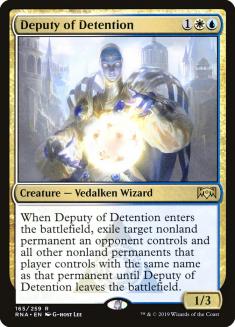
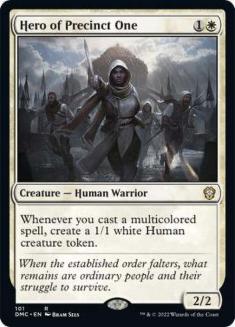
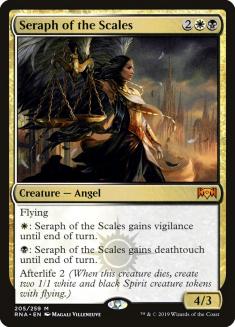
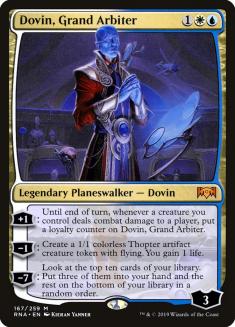
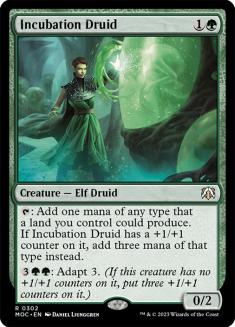
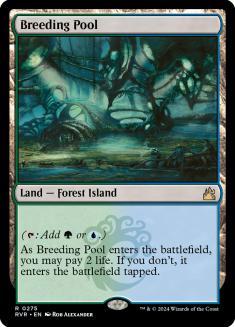
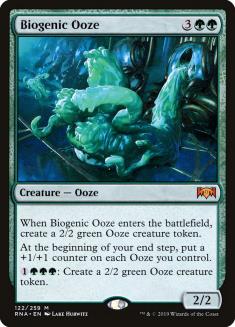
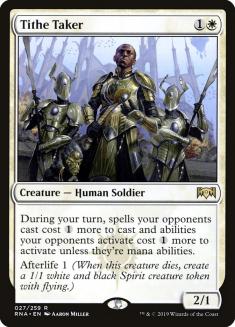
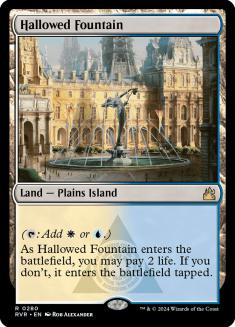
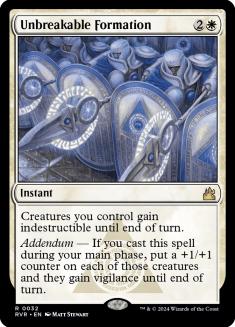
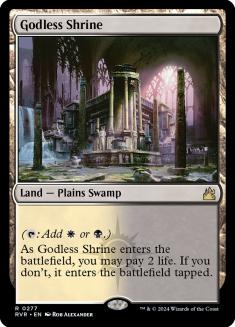
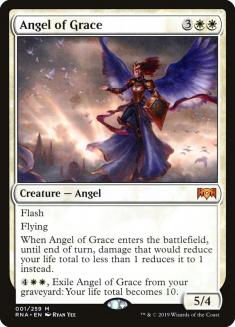
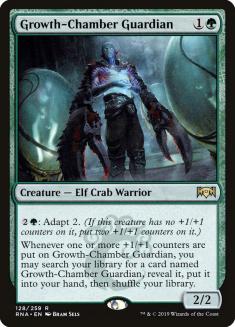
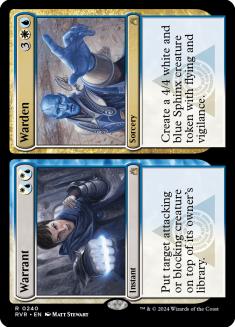
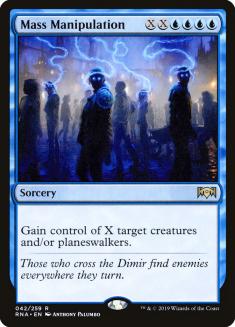

That’s amazing. Chances are, if there was a card you were excited about
coming into this weekend, it probably performed fairly well.
Based on the top tables (not just the Top 8), these are the decks that seem
to be at the top of the metagame right now:
- Sultai Midrange
- Esper Control
- Esper Midrange
- Izzet Drakes
- Bant Midrange (Or possibly some other Simic-based Climb deck)
- Mono-Red Aggro
- Azorius Aggro
- Bant Nexus
Things are looking good for you if you’re a green-based midrange deck, a
white/blue based control deck, a white-based aggro deck, a mono-red aggro
deck, or a Nexus of Fate deck. On the other hand, there were quite a few
key cards and strategies that haven’t shown up yet. Prime Speaker Vannifar
did not make an impact this weekend, even though Simic-based strategies did
quite well. Judith, the Scourge Diva and Bedevil were conspicuously missing
from even the few Rakdos Aggro decks that did show up.
Jimmy Brandlien was literally the only Gruul mage on Day Two
, and even he didn’t run Domri, Chaos Bringer. I’m still waiting on the
promised resurgence of Tribal Merfolk decks. I’m still not sold that Gates
is a real deck, though
Mason Clark did manage to finish 20th with this brew
.
And that’s where we’re at right now. Standard still looks great, so don’t
expect it to wane in popularity any time soon. Dump the cards that aren’t
seeing play yet, be smart in trading into your new deck, and enjoy the
sweet new format as much as you can.
This Week’s Trends
- Ravnica Allegiance: Mythic Edition
went on sale last Thursday, popping up on WotC’s eBay store for $250 and
selling 3,000 copies in a matter of seconds. We know this because WotC
either forgot to (or chose not to) remove the sales counter on the auction,
which let the entire Magic community see exactly how many copies of this
product were moving out the door. -
While selling 3,000 copies of anything in moments is quite impressive, the
next few hours were a bit of a let-down for anyone who bought Mythic
Edition in hopes of flipping it for a profit. WotC hit the 5,000 mark by
the end of the hour, but it took almost the entire rest of the day to
approach 10k. And by this point, Twitter sleuths had examined the auction
page’s source code in order to find out the total number of box sets that
would be put up for sale. That number was initially set at 20,000, though
it was gradually lowered throughout the day. The listing disappeared that
night, but a brand new one popped up again the following day. As of this
writing, you can still buy copies of the latest mythic edition direct from
WotC for MSRP. -
To me, the biggest issue with this set is not the actual numbers produced
(20,000 is a reasonable print run that is likely to be on par with most
Masterpieces), but the current perception of the set as “common” and
“readily available.” People love their shiny foil expensive nonsense cards
in large part because of how rare they feel and how impressed other people
are when they see them in your collection. Right now, the perception is
that this set is rather easy to get, which should keep demand fairly low
for the foreseeable future. -
The good news for those of you who bought in is that you’re not terribly
likely to lose money on this deal in the end. This set will sell out at
some point, and you should be able to (eventually, at least) make a modest
profit re-selling your copy. You might actually have better luck cracking
packs and trading/selling the planeswalkers locally, because an individual
frameless Ral Zarek is going to be far more impressive than a sealed box
set. Unfortunately, though, I don’t think this set is going to be free
money mode the way Guilds of Ravnica: Mythic Edition was. -
Over in Modern, there were a few modest spikes this week. Gemstone Mine is
up a couple of bucks, which makes sense since it’s one of the scarcest
cards in Modern and it sees play in several of its best decks, including
Dredge. With no reprint sets on the horizon, buying in feels a little safer
than it usually does. Plus, with Ironworks out of the metagame, decks like
Dredge and Amulet Titan might start to see more play. Vesuva also jumped a
couple of bucks this week, likely due to Amulet Titan hype as well. -
But the biggest gainer of the week was Massacre Wurm, which doubled in
price and is continuing to rise. It’s possible that this gain is due to
people messing around with Prime Speaker Vannifar in Modern, but I suspect
that a lot of the demand is actually due to Teysa Karlov players in
Commander. Massacre Wurm is absurd with Teysa, and the available supply of
Wurms is quite low. -
Teysa is currently the most popular new commander from Ravnica
Allegiance according to EDHREC,
and I’d familiarize myself with its list of staples-I have no doubt that
I’ll be highlighting several of them over the next couple of weeks. The
ones that I’m most bullish on right now? Hallowed Spiritkeeper from Commander 2014 and Black Market from Mercadian Masques.


